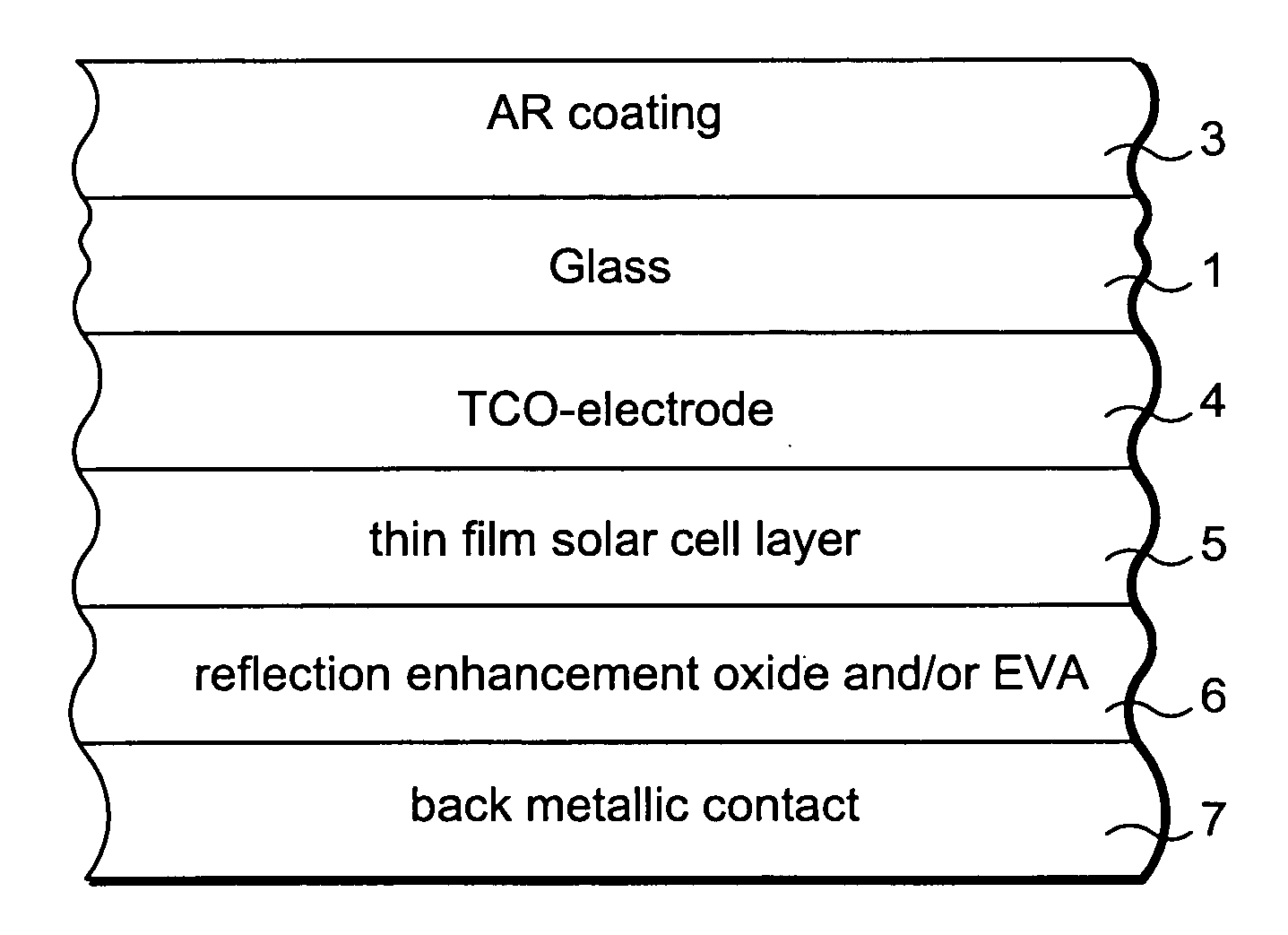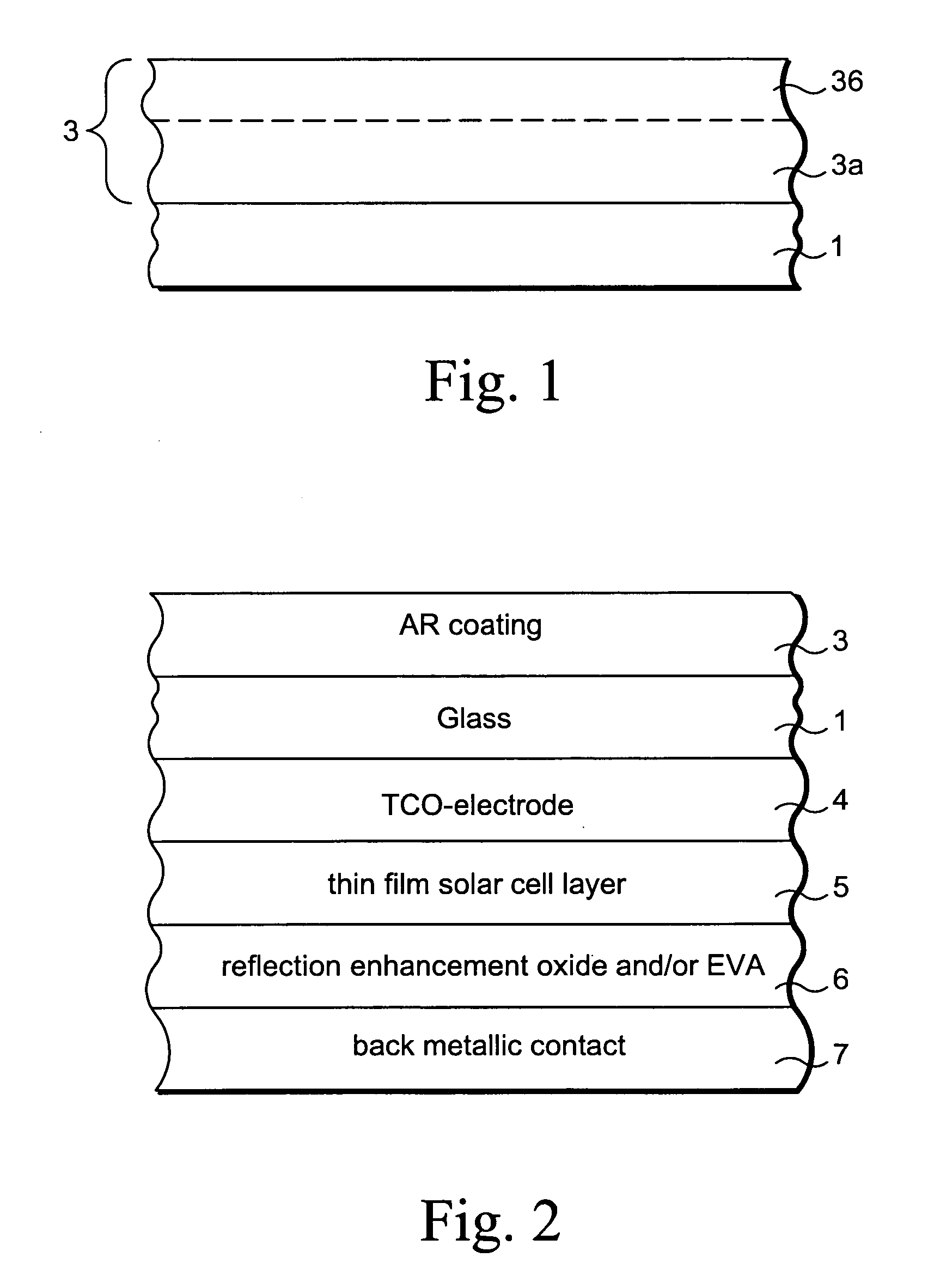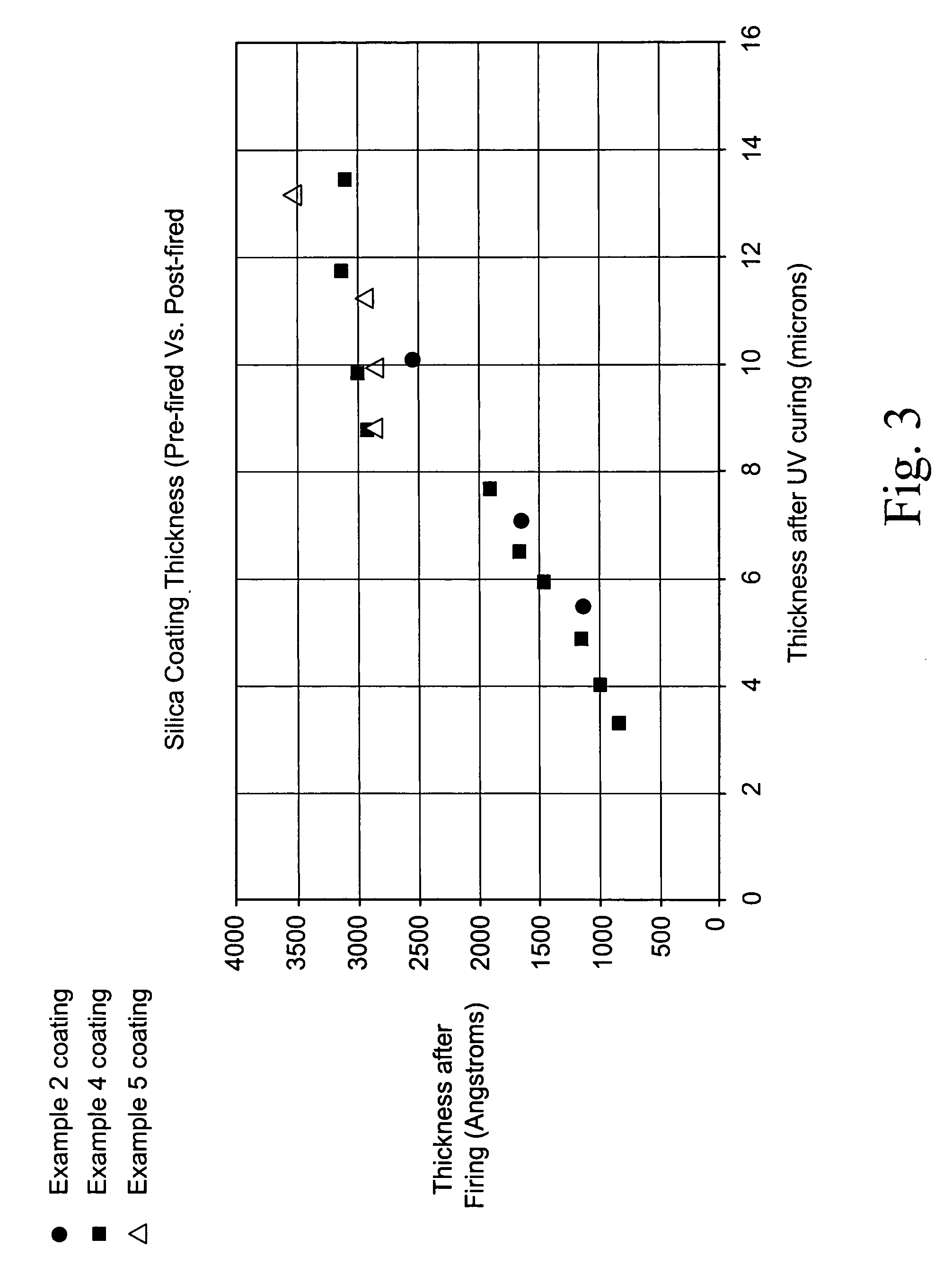Method of making an antireflective silica coating, resulting product and photovoltaic device comprising same
a technology of anti-reflective silica and silica gel, which is applied in the direction of coatings, pv power plants, electric/magnetic/electromagnetic heating, etc., can solve the problems of inability to meet the requirements of practical applications, porous coatings that may not be mechanically robust, and less efficient solar cells
- Summary
- Abstract
- Description
- Claims
- Application Information
AI Technical Summary
Benefits of technology
Problems solved by technology
Method used
Image
Examples
example # 1
Example #1
[0056]A mixture of UV curable epoxy monomer Cyracure resin UVR-6107 (available from Dow Chemical Co.), and a cationic photoinitiator Cyracure UVI-6992 was prepared by combining 96 gm of resin with 4 gm of initiator. To 15.65 gm of this mixture was added 0.5 gm of (3-glycidoxypropyl)trimethoxysilane (GLYMO), and 0.7 gm of 70% dispersion colloidal silica in methylethyl ketone obtained from Nissan Chemical Co. (MEK-ST) was added to form a stable silica precursor formulation. Concentration expressed in terms of total silicon dioxide for this formulation is about 2% by weight. The resulting viscous formulation is particularly suitable for roller coating process to produce coatings on large substrates. This coating formulation was applied within minutes after preparation to soda lime glass substrates by spin coating method to produce coatings of varying thickness. Coatings were cured at room temperature by exposure to UV radiation for about 30-40 seconds, and then fired at 625° ...
example # 2
Example #2
[0057]A coating formulation was prepared by mixing 6.6 gm of the mixture described in Example 1 and 4.5 gm of UV curable monomer described in Example 1. Coatings were made by spin coating at different RPM. Coating thickness after UV curing and after firing at 625° C. / 5 min is shown in FIG. 3. Refractive index of the coating No. 3 was measured to be 1.26 at 550 nm and the data is shown in FIG. 4. The reflection and transmission spectra of coating No. 3 are shown in FIGS. 5 and 6.
example # 3
Example #3
[0058]A coating formulation was prepared by combining 2.35 gm of UV curable monomer described in Example 1 with 0.13 gm of GLYMO and 0.37 gm of 15% dispersion of a colloidal silica in isopropanol, IPA-ST-UP, obtained from Nissan Chemical Co. The mixture was diluted by adding 1.57 gm of n-propanol. Coatings were made by spin coating followed by UV curing and firing as described in Example 1. Coating thickness after UV curing and after firing at 625° C. / 5 min is shown in Table 3. Refractive index of the coating was measured to be 1.24 at 550 nm and the data is shown in FIG. 4. The reflection and transmission spectra of coating No. 3 are shown in FIGS. 5 and 6.
TABLE 3Coating thicknesses of four coatings madein accordance with Example #3Thickness afterThickness after firing atCoatingUV curing625° C. for 5 minutesNo.RPM / 30 sec(microns)(Angstroms)110003.672027215002.921740320002.511400430001.99950
PUM
| Property | Measurement | Unit |
|---|---|---|
| temperature | aaaaa | aaaaa |
| refractive index | aaaaa | aaaaa |
| refractive index | aaaaa | aaaaa |
Abstract
Description
Claims
Application Information
 Login to View More
Login to View More - R&D
- Intellectual Property
- Life Sciences
- Materials
- Tech Scout
- Unparalleled Data Quality
- Higher Quality Content
- 60% Fewer Hallucinations
Browse by: Latest US Patents, China's latest patents, Technical Efficacy Thesaurus, Application Domain, Technology Topic, Popular Technical Reports.
© 2025 PatSnap. All rights reserved.Legal|Privacy policy|Modern Slavery Act Transparency Statement|Sitemap|About US| Contact US: help@patsnap.com



